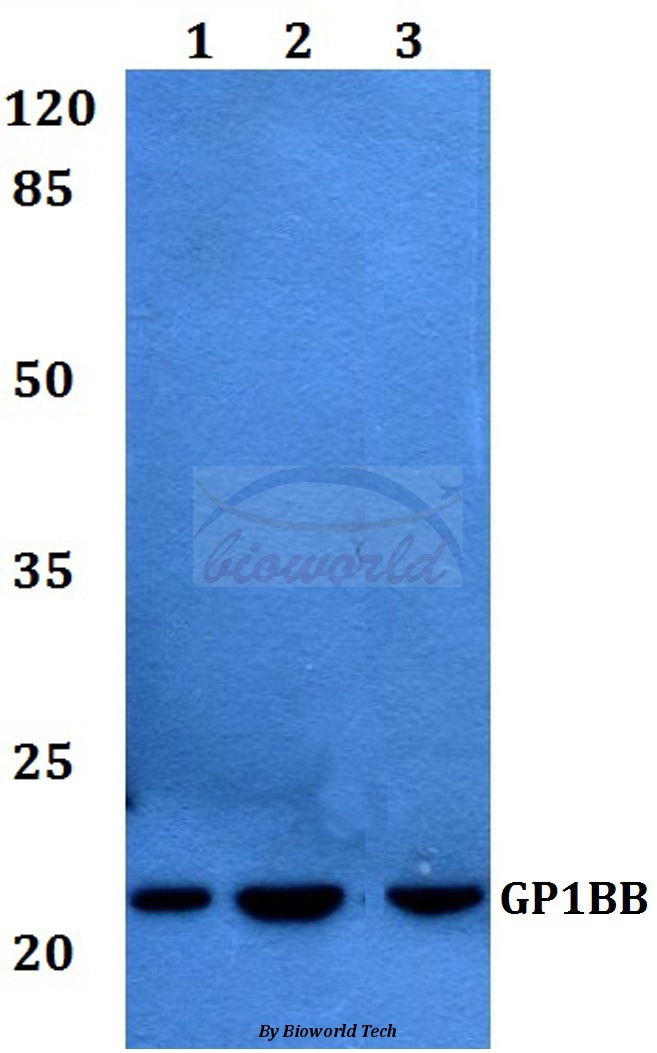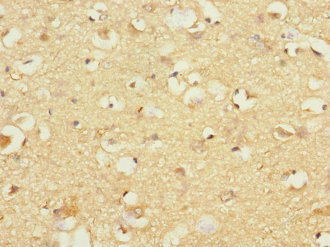CD42c antibody [N2C2], Internal
GTX113355
ApplicationsWestern Blot
Product group Antibodies
ReactivityHuman, Mouse
TargetGP1BB
Overview
- SupplierGeneTex
- Product NameCD42c antibody [N2C2], Internal
- Delivery Days Customer9
- Application Supplier NoteWB: 1:500-1:3000. *Optimal dilutions/concentrations should be determined by the researcher.Not tested in other applications.
- ApplicationsWestern Blot
- CertificationResearch Use Only
- ClonalityPolyclonal
- Concentration0.75 mg/ml
- ConjugateUnconjugated
- Gene ID2812
- Target nameGP1BB
- Target descriptionglycoprotein Ib platelet subunit beta
- Target synonymsBDPLT1, BS, CD42C, GPIBB, GPIbbeta, platelet glycoprotein Ib beta chain, GP-Ib beta, antigen CD42b-beta, glycoprotein Ib (platelet), beta polypeptide, glycoprotein Ib platelet beta subunit, nuclear localization signal deleted in velocardiofacial syndrome, platelet membrane glycoprotein Ib beta
- HostRabbit
- IsotypeIgG
- Protein IDP13224
- Protein NamePlatelet glycoprotein Ib beta chain
- Scientific DescriptionPlatelet glycoprotein Ib (GPIb) is a heterodimeric transmembrane protein consisting of a disulfide-linked 140 kD alpha chain and 22 kD beta chain. It is part of the GPIb-V-IX system that constitutes the receptor for von Willebrand factor (VWF), and mediates platelet adhesion in the arterial circulation. GPIb alpha chain provides the VWF binding site, and GPIb beta contributes to surface expression of the receptor and participates in transmembrane signaling through phosphorylation of its intracellular domain. Mutations in the GPIb beta subunit have been associated with Bernard-Soulier syndrome, velocardiofacial syndrome and giant platelet disorder. The 206 amino acid precursor of GPIb beta is synthesized from a 1.0 kb mRNA expressed in plateletes and megakaryocytes. A 411 amino acid protein arising from a longer, unspliced transcript in endothelial cells has been described; however, the authenticity of this product has been questioned. Yet another less abundant GPIb beta mRNA species of 3.5 kb, expressed in nonhematopoietic tissues such as endothelium, brain and heart, was shown to result from inefficient usage of a non-consensus polyA signal within a separate gene (septin 5) located upstream of this gene. In the absence of polyadenylation from its own imperfect site, the septin 5 gene uses the consensus polyA signal of this gene. [provided by RefSeq]
- ReactivityHuman, Mouse
- Storage Instruction-20°C or -80°C,2°C to 8°C
- UNSPSC12352203
References
- Cheng B, Toh EK, Chen KH, et al. Biomimicking Platelet-Monocyte Interactions as a Novel Targeting Strategy for Heart Healing. Adv Healthc Mater. 2016,5(20):2686-2697. doi: 10.1002/adhm.201600724Read this paper




